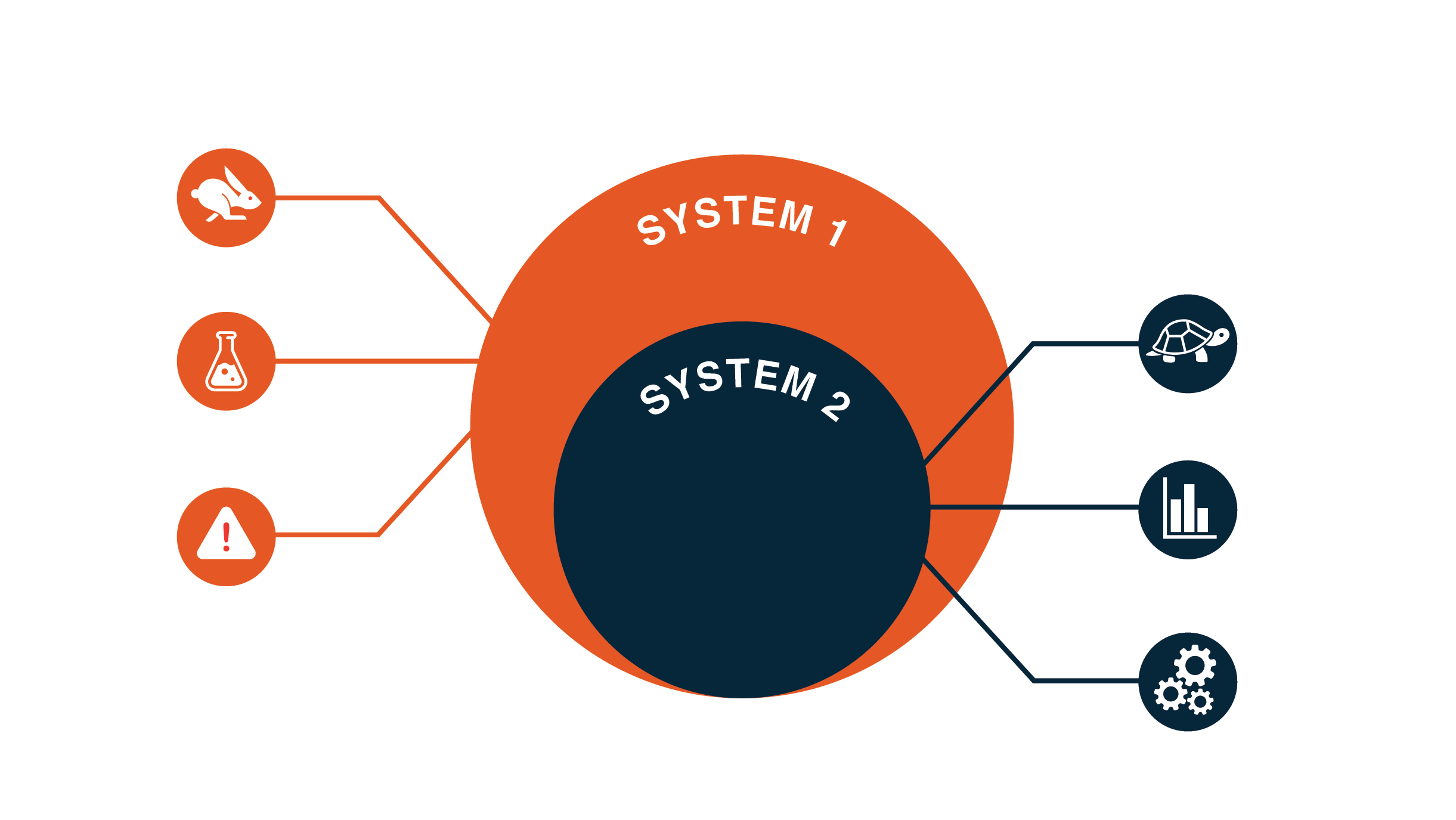What You Should Know About Technology and Type 1 Thinking

12 Dec 23
Intelligence

12 Dec 23
Intelligence
Next up in our series introducing you to the world of intelligence, we’re delving into type 1 thinking - because the ability to think clearly is critical to intelligence analysis.
In his book ‘Thinking, Fast and Slow’, Daniel Kahneman describes 'system 1’ thinking as automatic, fast and heavily influenced by biology, context and experience.
In contrast, ‘system 2’ thinking is deliberate and controlled, intentional and has logic (informal and formal) behind it. The systems work together to produce the responses and decision that we make every day.
Have you ever sent an email or said something and then immediately regretted it and wanted to take it back? The reason for your initial reaction is that you may have been operating in Type 1 thinking to make the decision, then you thought about what you’d said and wanted to change your mind. But with technology it’s too late. The email has been sent, the button pressed, or comment made. The damage is done….

'System 1’ thinking is automatic, fast and heavily influenced by biology, context and experience, whereas ‘system 2’ thinking is deliberate and controlled, intentional and logical.
With modern technology it’s very easy to fall into repetitive type 1 thinking when making choices and decisions that can have consequences within the business environment.
As an analytical team, we looked at how we think you can limit the drive to default to type 1 thinking.
Read on for some tips on how to override your type 1 instincts in a tech-heavy world.
With email it is very easy to fire off a quick response; we’ve all done it and then felt that immediate sense of dread.
It could be the spelling mistake that you only see once sent, the clumsy sentence that could be misunderstood, or cut and paste error. And we’ve all been victim to forgetting to attach the attachment!
Well help is at hand; did you know that you use a timer to delay sending emails? Only a minute or two is needed but this is enough time to let you adjust any errors or misspeaking that may have crept in.
To add a delay to your emails in Microsoft Outlook:
Click on ‘file’ and open ‘manage rules and alerts’.
Click on ‘new rule’.
Click ‘apply rule to messages I send’.
Add a condition (optional) or click ‘next’ to apply the rule to all messages.
Click ‘defer delivery by number of minutes’ and choose how long you’d like to delay sending.
Add an exception (optional).
Finalise the rule, and you are rewarded with some extra thinking time once you press send!
These are a great tool to break a problem down and then explore the differing elements.
They’re simple tools but are often overlooked: speaking to my fellow analysts we use mind maps for big problems but seldom for smaller tasks.
We conducted an internal experiment where we used mind maps for as many problems as we could, using an online package. We were pleasantly surprised at how the tool helped us break even the simplest of problems down into its component parts and force us into type 2 thinking.

Mindmaps are a great way to break a problem into smaller components
“Ping!”. You were just in the middle of thinking about an important element of a project. And then “ding!” – with full Pavlovian conditioning (a type of conditioned learning which occurs because of your learned, instinctive responses) you look up at the sound of a new piece of information or task coming in.
We try to fight it, but the conditioned response means that like dopamine addicts we respond. To get around this try changing system settings to ‘do not disturb’. Or block time in your diary to check notifications. “Ah - but I’m too busy!”, I hear the collective cry. However, just ten minutes an hour will give you time to process the information. Maybe try it?
Type 1 thinking is fully at play with interruptions in online meetings. Setting meeting rules is a great way to overcome this and allow all to have their say. Within teams the ‘hand up’ rule seems childish but allows all to have their say. This is particularly important in examples where, if only a few seconds had been taken, the issue that the interruption was about would have been addressed.
Limiting type 1 thinking requires practice, and in some cases planning.
What are your key methods for limiting type 1 thinking?
What’s the biggest mistake that you have made in an email or meeting where if you had just taken a few seconds to think, it would not have occurred?
Have a think about it – being able to control your type 1 thinking is going to be critical as you move into your intelligence role of look to embed intelligence practises in your business.

Limiting type 1 thinking requires practice, and in some cases planning.

16.05.24
New Joiners
It's our pleasure to welcome Ellie Moore to the Inzpire family, who joins us as a marketing and communications officer.
Our team are here to help. If you have any questions, no matter how big or small, please get in touch.
 +44 (0)1522 688231
+44 (0)1522 688231
 .(JavaScript must be enabled to view this email address)
.(JavaScript must be enabled to view this email address)